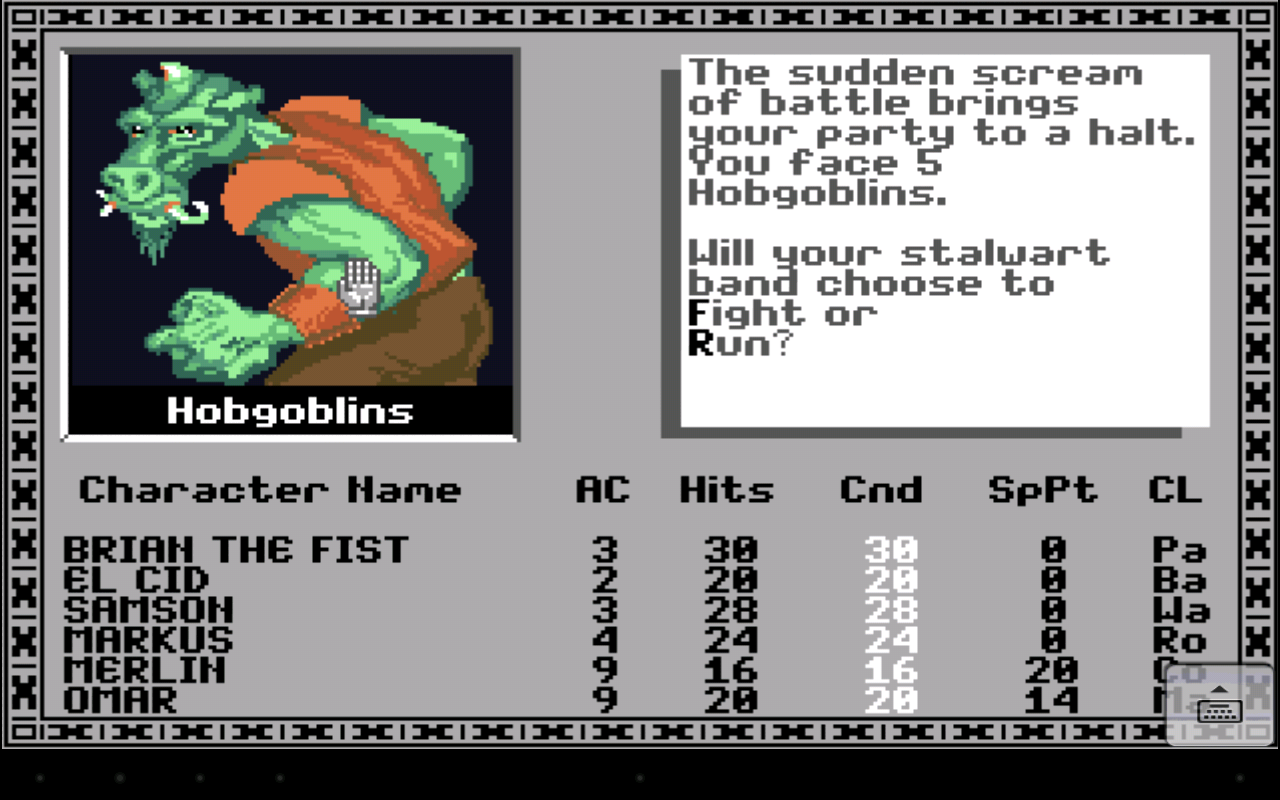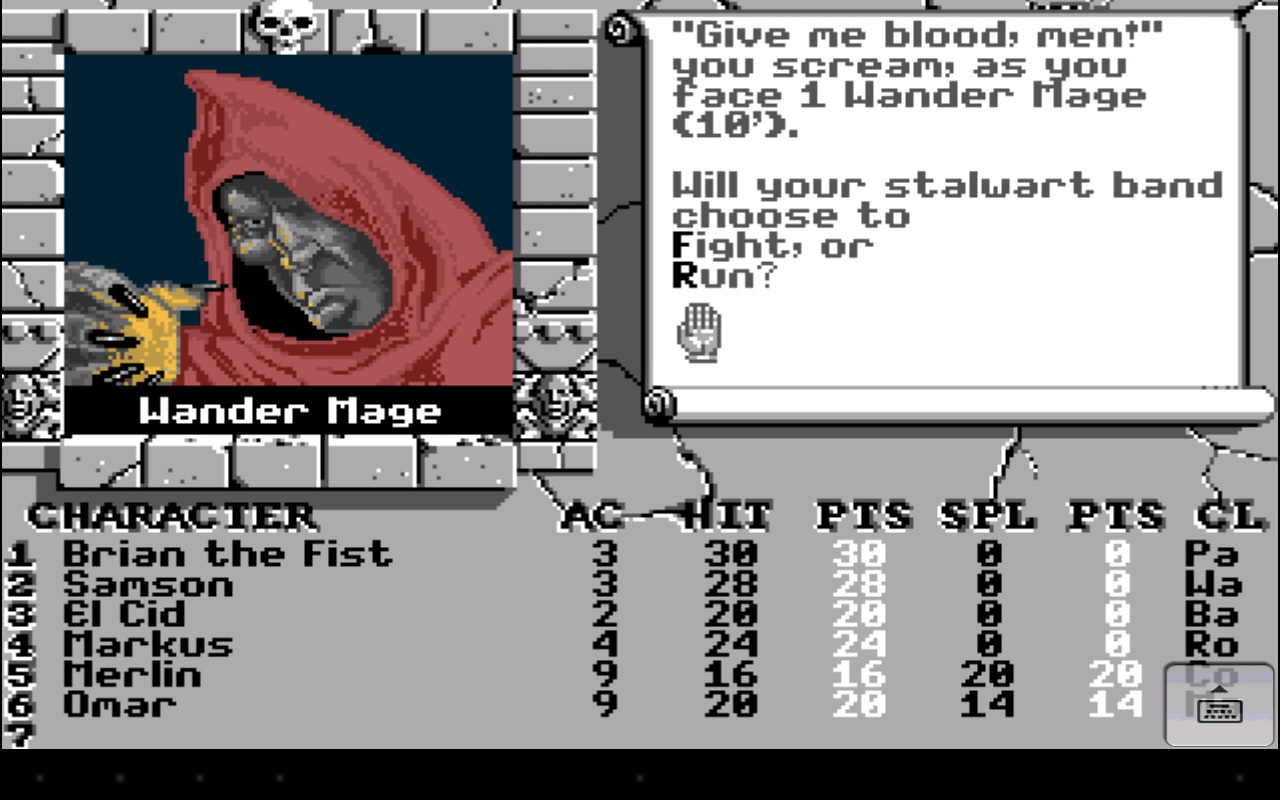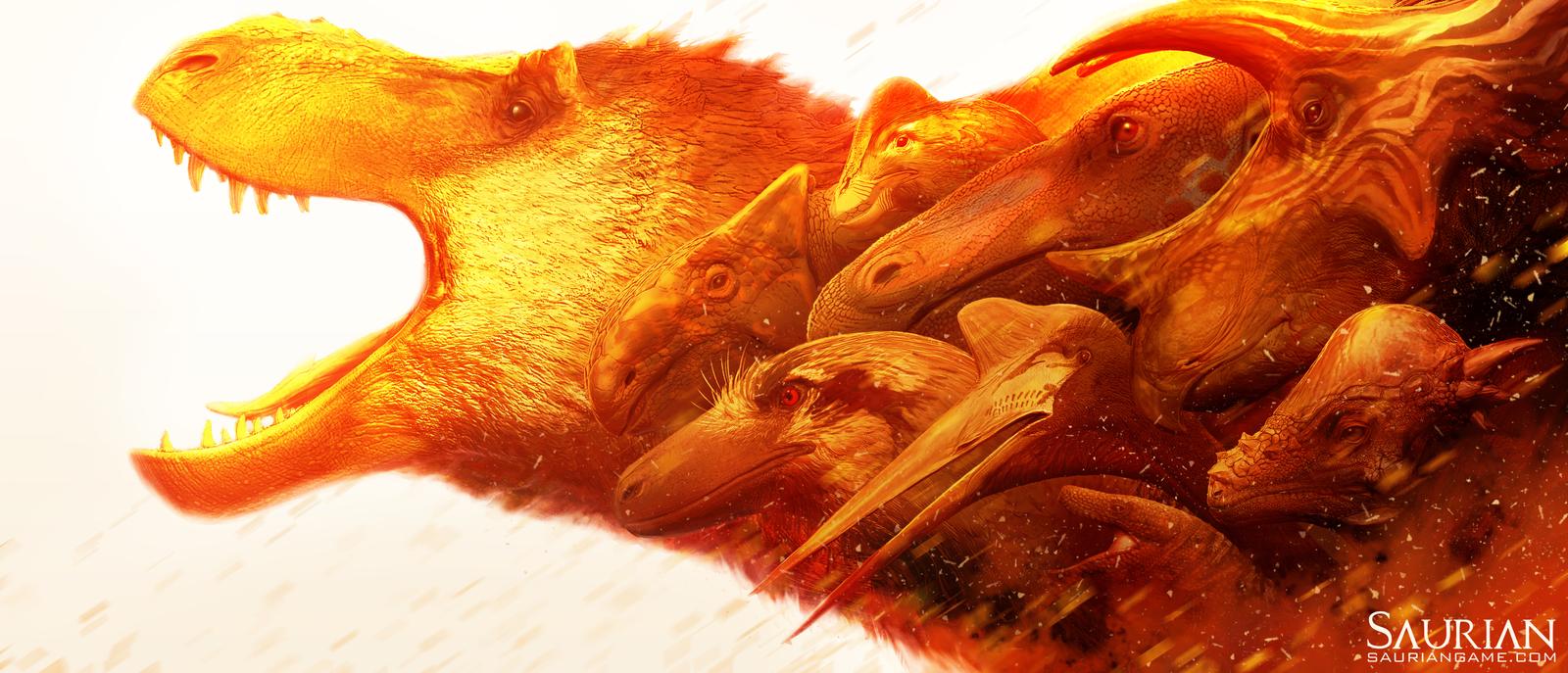The Bard’s Tale dropped in 1985 as a dungeon crawling role-playing game (RPG). It’s a simple enough setup: Skara Brae’s fate is threatened by a maniacal wizard, Mangar. You form a hodgepodge of warriors and embark on a set of adventures. Like any RPG, you gain experience through random encounters and quests, and your party consists of several classes: hunter, rogue, monk, paladin, conjurer, magician, warrior…oh yeah, and bard. Seriously, how can you forget the bard? The bard’s songs are actually magical, and influence the game in various capacities, such as boosting your party’s damage.
What’s really unique is that upon loading a game on my PC, I was given the option to import characters from Ultima III and Wizardry. While I didn’t have any characters to import, it was still a nice offer. Thanks Bard’s Tale. For a 1985 game, this feature was, and is, inventive. It’s a rarity even within franchises. There are some pictures, but fighting is text-based save the colorful thumbnails. While playing, I quite enjoyed the music, which often is one of my favorite aspects of a game. Sometimes, particularly when coupled with striking visuals, in-game music becomes overshadowed, and I’m not sure if the soundtrack is that notable, or the barebones visuals highlighted the musical landscape. Nevertheless, I usually felt as though I were sitting in a tavern being serenaded by the fire. Apparently the composer was Lawrence Holland, who created the soundtrack for Star Wars: X-Wing. There’s a new fun fact for your next conversation.
Just a year later, in 1986, The Bard’s Tale II debuted. What’s with the short wait between entries in a video game series back in the day? Whether this is due to less complex games, no DLC to capitalize on, no multiplayer, who knows. Suffice it to say games came out much quicker than in present day. The Bard’s Tale II remains similar in gameplay to the original Bard’s Tale. You can still import characters from Ultima III and Wizardry, combat is text based with animations, but several changes improve upon an already great game. The Bard’s Tale II offers a much larger arena. Now there are multiple towns, including Corinth and Ephesus (yeah, apparently there’s a Biblical theme. I just want to play the RPG, thank you, I’ll skip the tract). Luckily, the Christian references aren’t nearly as overt as that slew of old school Bible games as seen on AVGN.
The story picks up right were the first Bard’s Tale left off. You’ve just conquered Mangar, and it’s time to grab a few frosty ales down at the pub and relax. Enter the wizard Saradon (which is vaguely reminiscent of Saruman or Sauron), who informs you that there are more adversaries to deal with thanks to the conniving archmage Lagoth Zanta. Though the narratives are mildly similar, and core gameplay isn’t radically different, The Bard’s Tale and The Bard’s Tale II feel unique, especially with the subtle, though significant changes implemented in the sequel.
1988 brought The Bard’s Tale III swinging and singing back into action. A few familiar features: being able to import characters, this time from Ultima III and IV, not just III, as well as Wizardry. The text-based adventure with select animations remains as the base gameplay, but visuals are significantly improved. By today’s standards it’s a bit outdated, but hey, pixelated adventures still offer some of the greatest experiences available. Don’t judge a game by its graphics. An awesome new (well, at least within the Bard’s Tale franchise) feature was the addition of an auto-map. I found this greatly improved in-game navigation, especially since The Bard’s Tale III provides a much larger environment.
What struck me the most while exploring The Bard’s Tale series was the way each game kept the fantastic gameplay elements while building upon and improving on previous entries. Changes like adding an auto-map, and features such as character import were revolutionary. The series walks a fine line of preservation and innovation, making each title appear pleasingly similar yet refreshingly different. It’s a difficult balance, but The Bard’s Tale I, II, and III managed the lofty feat. The forthcoming The Bard’s Tale IV exhibits a massive graphical makeover, but persistent fantasy imagery and a voiceover which suggests that core storytelling will remain largely the same. With an incredibly impressive Wasteland 2, and Tides of Numenera on the way, it’s safe to say we’ve all got high expectations for The Bard’s Tale IV.
Note that while I didn’t play through the full ’04 The Bard’s Tale, I did test it out for a few minutes, and found it quite enjoyable and humorous. If you’re in the mood for a retro romp, check out The Bard’s Tale classic trilogy. It’s aged quite well.
Learn more about The Bard’s Tale IV by checking out our previous coverage. You can also head over to the Bard’s Tale IV Kickstarter campaign to learn more.








I’m pretty sure Lawrence Holland created the X-Wing games, not just the soundtracks.
Other than that, nice article. 🙂
Did you know there was a real town called Ephesus? And a real city called Corinth? But you don’t want the tract….